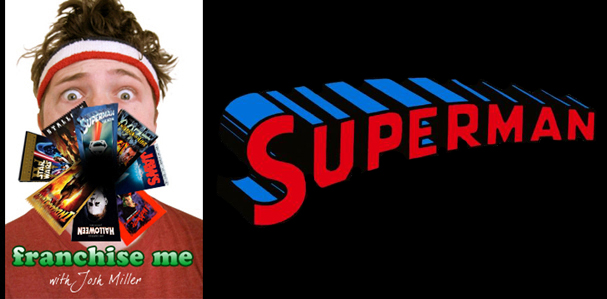
Hollywood loves a good franchise. The movie-going public does too. Horror, action, comedy, sci-fi, western, no genre is safe. And any film, no matter how seemingly stand-alone, conclusive, or inappropriate to sequel, could generate an expansive franchise. They are legion. We are surrounded. But a champion has risen from the rabble to defend us. Me. I have donned my sweats and taken up cinema’s gauntlet. Don’t try this at home. I am a professional.
Let’s be buddies on the Facebookz!
The Franchise: Superman: following the peacekeeping exploits of super-powered alien Kal-El, who was sent to Earth moments before his home-planet exploded, and was then subsequently raised by middle-American farmers under the name of Clark Kent. Created by writer Jerry Siegel and artist Joe Shuster as a comic book character, the franchise has expanded into pretty much every single conceivable medium, spanning from 1938 to the present. For our purposes here, we’ll only be examining the theatrically released live-action films.
The Installment: Superman (1948)
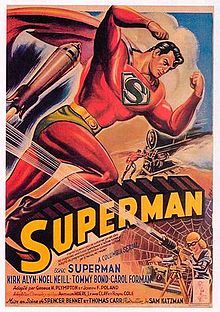
The Story:
After we establish his familiar backstory, Clark (Kirk Alyn) decides to leave the farmland and make his way to the big city to be a reporter despite his total lack of qualifications. Before he even gets to Metropolis, he winds up saving Lois Lane (Noel Neill) and Jimmy Olsen (Tommy Bond) when their train is about to crash. Once in Metropolis, he endears himself to the Daily Planet‘s editor Perry White by proclaiming that he can get the scoop on a story involving some trapped miners. He of course can, because he is Superman. And he saves Lois again. Now Clark is suddenly a reporter, and just in time for the biggest story yet! A criminal mastermind known as the Spider Lady has a nefarious plan to steal a top-secret new weapon called the Reducer Ray, that doesn’t reduce things in size, as its name might imply, but rather just blows them up. I guess it reduces them to oblivion. So the name still checks out. Anyway, Superman saves Lois some more. Then saves Jimmy a few times. Then Lois a couple more times too.
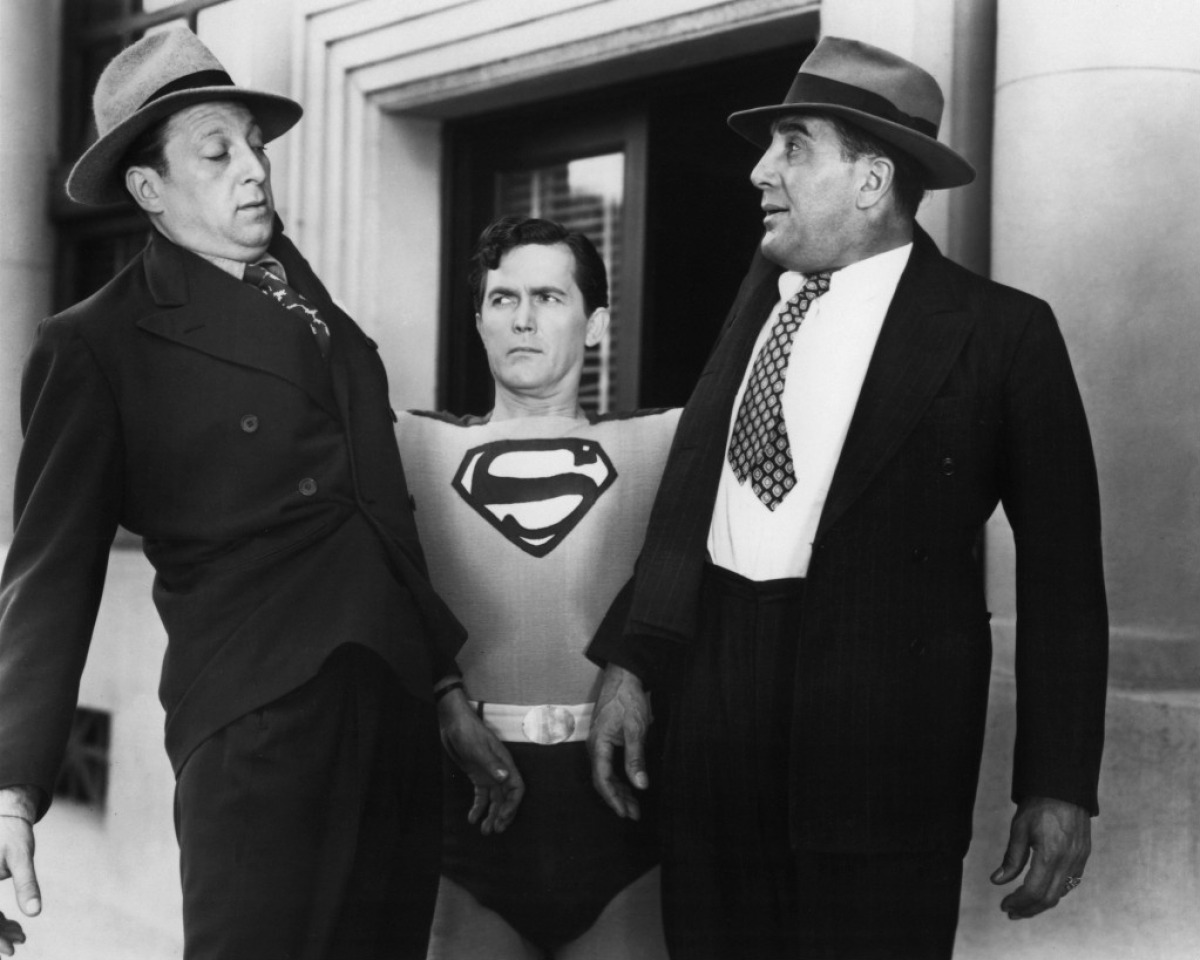
What Works:
When Superman hit the newsstands in Action Comics #1 in 1938 he was a character that kind of defied live-action filmmaking, at least with the special FX capabilities of the era. The gorgeous Fleischer Studios animated shorts from the early 1940s were the ideal forum in which to fully explore Superman’s superness. It was the Fleischer cartoons (building off the popular Superman radio program) that helped popularize the fact that Superman was “faster than a speeding bullet, more powerful than a locomotive, and able to leap tall buildings in a single bound.” Shifting Superman to flesh and blood and optical FX was a limiting prospect, and presumably the reason it took ten long years for the spectacularly influential and beloved hero to get a live-action adaptation — after all, Batman premiered after Superman and rather promptly got his own live-action serial. But live-action awaited Superman. It was just up to some enterprising individuals to figure out how the hell to make any of it passable. Finally in 1948 Columbia Pictures bit the bullet with this 15-part (244 minutes in total) serialization. [Some context for those not hip to film serials] Their solution to the FX problem was clever in its sheer non-cleverness. They just kept using animation. So any time Superman feels like taking to the air, Kirk Alyn simply runs and jumps off screen and then we cut to an animated Superman cruising over live-action backgrounds, Roger Rabbit-style. Then when he wants to land, he flies behind a bush and Alyn hops out the other side and strikes a jaunty pose. It was presumably disappointing to audience members who were excited to finally see Superman fly “for real.” It is pretty silly looking. The funny thing is — it is kind of effective too.
It helps that this is a serial (ie, for kids). Directors Thomas Carr and Spencer Gordon Bennet, and producer Sam Katzman, hit the right notes I think. Superman (for my money at least) is not a very complex character by nature. What is fun about the character, what struck a chord with comic readers, was his ability to do these amazing and impossible feats. I’m hardly a Superman expert so I’m not going to attempt to wow you with my understanding of the character, but Jerry Siegel and Joe Shuster basically slapped together elements from everything cool in pulp literature, cinema, and even bits of religion, to craft their Übermensch. Superman is capable of big things, so we want to see those big things. Having hand-drawn animation mixed in with live-action is sorta wonky, but at the end of the day I think it is the thought that counts for a project like this. These are film serials, so our expectations shouldn’t exactly be high. And in this context Superman is a good time — especially if you imagine watching it doled out in 15 chapters (it makes for a tedious single viewing, believe you me). It is basically a TV series. And I like that we don’t have to cut to Kirk Alyn awkwardly lying on his stomach in front of a rear-projection screen every time he needs to fly somewhere. I like being able to see Superman zoom out of the sky and into a window in a single shot. The animation works to highlight the practical FX we get, like Superman using a car bumper to hog-tie two goons and other amusing, standard Superman shenanigans.
I gotta respect the approach Columbia took with the serial. Given the time period, I would have expected Superman’s back story to be given a quick shout-out in some opening narration, then we’d just jump right to Clark already at the Daily Planet and fighting crime. But the entire first chapter (about 20 mins) is devoted to Superman’s origin story, with a huge chunk of that focusing on Jor-El back on Krypton. Kirk Alyn doesn’t show up as Clark until he’s full grown near the end of the chapter. I really like having a scene of Clark as a toddler pulling cart all by himself. That’s fun character building. If you don’t get Superman, you do after Chapter 1. And I guess that was the idea.
Noel Neill as Lois Lane is the best part of Superman. Aside from having an awesome hat, Neill plays Lois as a goofier version of Rosalind Russell from His Girl Friday — the kind of Lois that Zooey Deschanel would probably be cast as were it made now. And Neill has a lot of charm, enough to help out the somewhat wooden Kirk Alyn. I could have stood even more Lois. One of my favorite scenes in the serial is when Lois is ditches Clark (who she views as an annoying, upstart rival) by tricking him into thinking they have a flat tire, then hopping in the drivers seat once he gets out of the car and speeding away. Tommy Bond also makes for an ideal Jimmy Olsen. Really, the best parts of the serial, performance-wise, are the scenes with Lois and Jimmy. The two have great chemistry. I almost wish Superman had been a weird Rosencrantz and Guildenstern Are Dead presentation of comic, focusing on Lois and Jimmy, periodically bumping into Superman and dealing with the seemingly useless and vexing Clark Kent. That would be a blast. If you can get into the spirit of a serial, it is pretty hilarious just how often Lois and Jimmy need to be saved. Poor Jimmy gets knocked out like a zillion times too. That guy is going to have serious brain damage.
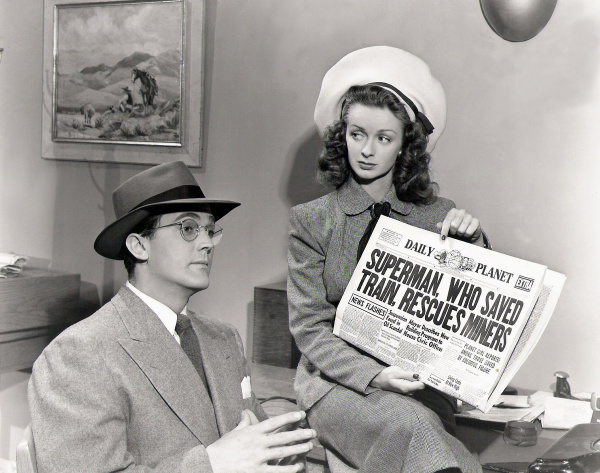
What Doesn’t Work:
It is a little hard to 100% look past how dated Superman is stylistically. But I also dig the cheesy dun-dun-dunnn vibe of film serials. My main issue here is that Kirk Alyn does not float my boat as Superman or Clark Kent. Presumably Alyn cast because his look and build were right (at a time when actors were not all gym rats, so being buff was a novelty), he just isn’t much of an actor. He provides distinction between Superman and Clark (a schtick started by Bud Collyer on the radio program), which is nice, but neither of those two performances are very compelling. And as I said before, Superman isn’t a complex character. You have to nail the performance if you want the audience to love the character, otherwise we’re left with a generic super-dude. Admittedly, I’m looking at Alyn from 2013. Maybe he didn’t seem as wooden back then. Though that is hard for me to swallow considering the wealth of sensational cinematic characters that had already come and gone by 1948. Buster Crabbe was hardly a Cary Grant either in the Flash Gordon serials, but there was flavor to his performance. Alyn’s Clark is too much of a zero, and his Superman is a bit much — too much grinning, too much chest puffing, and what is with Alyn’s run? He looks like a total pansy when he runs. Is that how men ran in 1948? The end result here is that Superman only feels super when he is bending metal or flying through the air. When it is just Alyn in a room, walking and talking as Superman, the character is a doofus. It isn’t all on Alyn’s shoulders either. I know this was a serial, but I still don’t think we need a 30-second close-up on Alyn hamming it up with his eyes every time Superman uses his X-ray vision. Not to mention, Clark is quite anal about only doing super things while dressed as Superman. Even when no one is around to see he will leave Lois unconscious on the ground so he can change (which is a fairly slow process here). But repetition and filling time was kind of the name of the game with serials.
I don’t plan to get into how well these films adapt the Superman comics, because as I said, I’m no Superman expert. Plus, Superman evolved a lot as a character over the first several decades of his existence. That said, it feels wrong in Superman the way that Superman is constantly letting people die. Superman has two different modes of murderous indifference here. One applies to good guys. On two different occasions Superman zips into a room to save Lois, and finds another person lying on the ground. In both occasions I wasn’t sure if this other person was dead or unconscious. Then Superman just grabs Lois and leaves. So, I guess they were dead then? I mean, he is Superman. I suppose he can just tell? Though we’ve also seen that it takes him a good 30 seconds to rev up his X-ray vision. And I know medicine has come a long way since 1948, but didn’t Superman want to rush these people to the hospital and see if they could be revived? It seems like Superman doesn’t give a shit. The second murderous indifference is aimed at bad guys, who Superman loves leaving trapped in buildings that are about to explode. In one case he again zips in to save Lois, while two goons are trapped in a jail cell, begging to be let out. Well, fuck those guys! Superman grabs Lois and leaves, even though – being Superman and all – he obviously has time to punch out a couple of the bars so the dudes don’t die.

Body Count: 12
Number of Times Superman Smugly Lets a Villain Shoot Him in the Chest: 3
Best Villain Dispatching: I like the simplicity of tying up two goons with the bumper from their own car.
Superman’s Superest Feat: Catching the rocket that is shot at him from a rocket launcher and throwing it back at the goons who tried to kill him, blowing up a huge boulder.
Best Use of His Brains: Putting on a lead vest to protect himself against the Spider Lady’s use of Kryptonite.
Should There Be a Sequel: I could go either way.
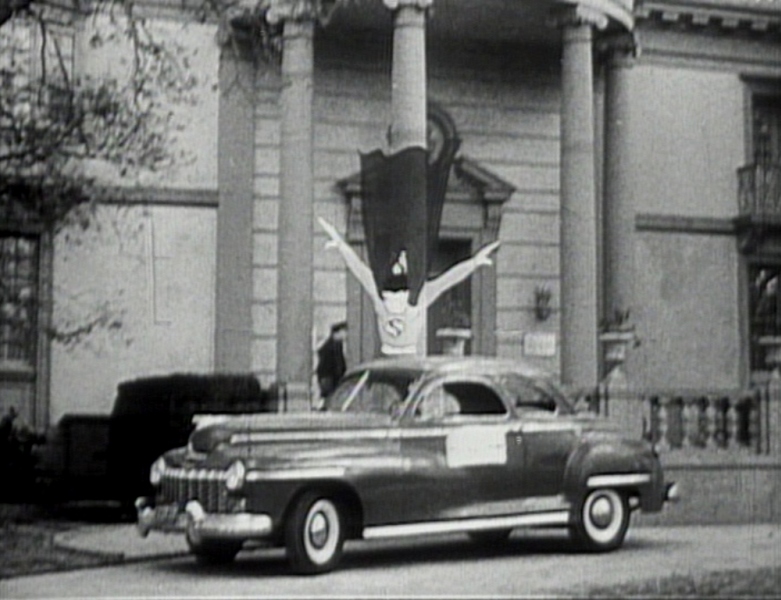
Up Next: Atom Man vs. Superman
previous franchises battled
Alien
Back to the Future
Critters
Death Wish
Die Hard
Hellraiser
Home Alone
Jurassic Park
Lethal Weapon
Leprechaun
Meatballs
The Muppets
Phantasm
Planet of the Apes
Police Academy
Predator
Psycho
Rambo
Tremors